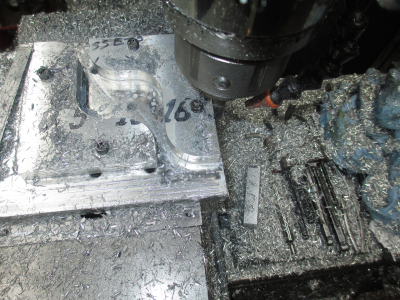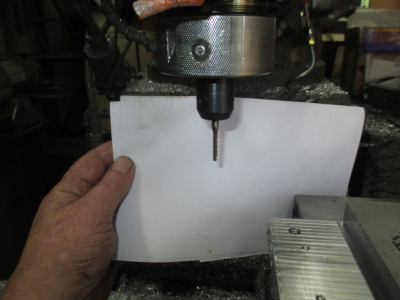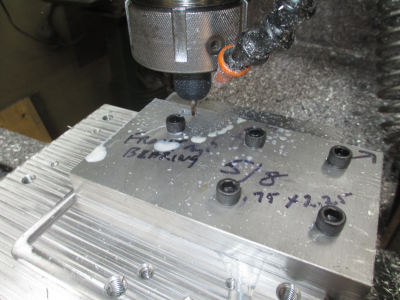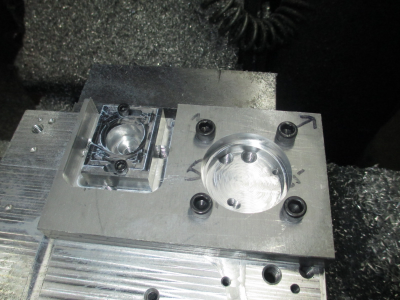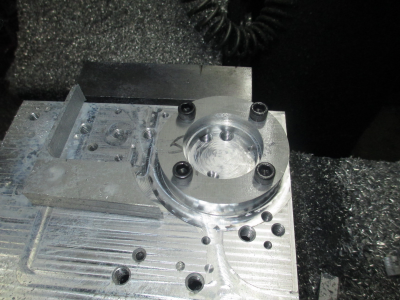always a pleasure to follow your projects Jim, I never fail to learn something new!
Thank you Matt.
Well another day and a few more chips.
Here is the bracket blank screwed to the fixture plate.
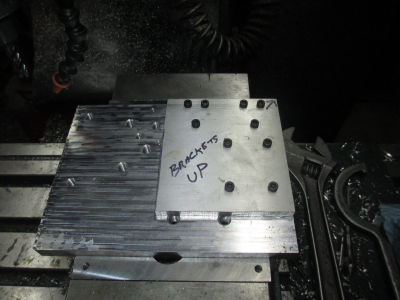
And in process. First remove the material between the parts because not doing so will result in a small bit of material that is floating around that could jam somewhere and potentially break a rather expensive end mill. More on breaking expensive endmills later.

I'm always amazed at the fast shutter speed of my cheap little camera. That spindle is turning 2200 RPM in this picture, no motion blur at all.
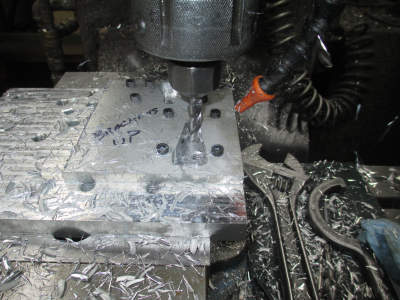
And profiling the outside of the parts
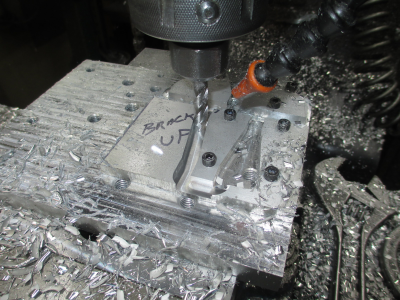
And finished, about 18 minutes run time. The endmill path around the part is just visible, you can't catch a fingernail on it. Almost not there.
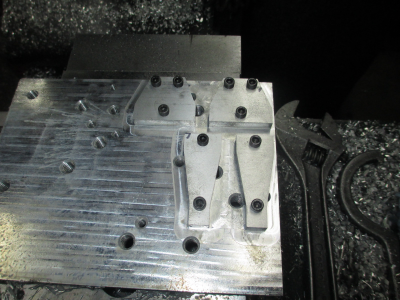
Then on to the next piece. It cut the two 3/8 slots perfectly then rapid over to do the outside profile and SNAP

A brand new 3/8, 3 flute, solid carbide, aluminum cutting Onsrud endmill (about $45). It won't cut 1/8 deep at 100 IPM and that RPM. I was looking at the G code on the screen just before this happened and saw it coming and was already moving to the E-stop , but I wasn't fast enough.

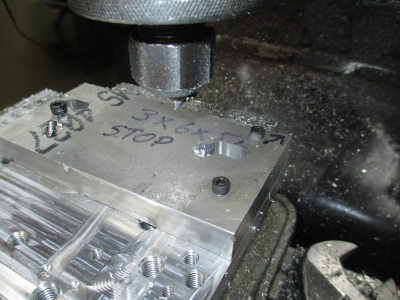
The problem was caused by a programmer (me) malfunction. The clearance height was supposed to be set at 1.5 inches, NOT 0.5 inches. 1.5 inch clearance height will be needed for a later part, would not need that much for this particular part but it saves confusion when everything is the same. The tool needs to clear the top of the material, plus the height of the hold down screw heads. In this case, 0.5 inches clearance height puts the tool 1/8 inch INTO the 5/8 thick material.

In my defense, I have my default clearance height set at 0.5 inches because I normally set Z zero to the top of the work, but in this case where I have a common fixture, I have Z zero set to the top of the fixture plate or the bottom of the workpiece which works out fine when working with material of different thicknesses, as long as the clearance height is set correctly for the operation.
Things can go south in a hurry on a CNC machine. I really hate it when the machine does exactly what it's told to do rather than what I want it to do.

I have gone through all of the CAM operations and made sure the clearance heights are set correctly. Anyway, grab another $45 end mill out of the drawer, stuff it in the holder, re-zero, and finish the part. I can save the part, a little surface blemish is not a problem, and that surface will be hidden when installed.
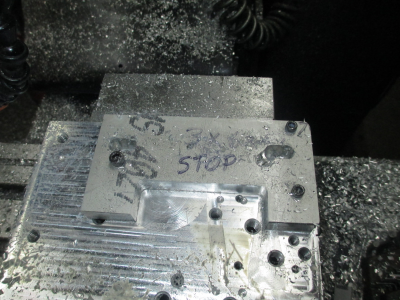
More tomorrow...... Stay tuned










